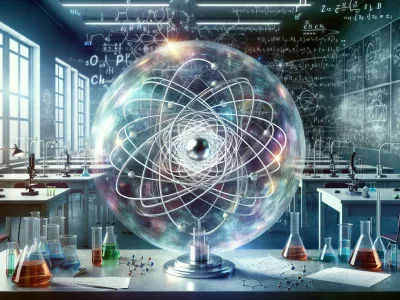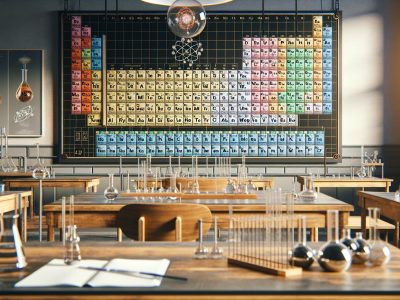Key Differences Between an Atom and a Molecule: A Simple Explanation
Imagine holding the very essence of the universe in your hands. Every breath you take, every object you touch, and even the stars above are built from the tiniest building blocks of matter—atoms and molecules. But have you ever wondered what sets these two apart? Though they’re often mentioned together, their roles in shaping the world around you couldn’t be more distinct.
Atoms are like solitary artists, crafting the foundation of everything, while molecules are the masterpieces created when these artists join forces. Understanding the difference between them isn’t just about science—it’s a gateway to grasping how life, nature, and even technology function at their core. So, whether you’re curious about the air you breathe or the chemistry behind your favorite gadgets, diving into this topic will reveal a intriguing area hidden in plain sight. Let’s uncover the magic of these tiny yet powerful entities.
Understanding Atoms
Atoms serve as the foundational units of all matter, comprising everything you see, touch, and even breathe. By understanding their definition and characteristics, you get closer to deciphering the complexities of the physical universe.
Definition and Structure of an Atom
An atom, defined as the smallest unit of matter retaining the properties of an element, consists of three main subatomic particles: protons, neutrons, and electrons. Protons and neutrons form the dense nucleus at the atom’s center, while electrons orbit the nucleus in defined energy levels or shells.
For example, a hydrogen atom has one proton and one electron, representing the simplest atomic structure. In contrast, larger atoms like uranium contain 92 protons, highlighting structural complexity. Each element, identifiable by its atomic number (number of protons), maintains distinct chemical properties.
These subatomic particles interact through forces like electromagnetism. Electrons are negatively charged, protons are positive, and neutrons are neutral, ensuring overall atomic stability. This structure enables elements to bond, forming molecules essential to life and technology.
- Atomic Number and Mass
The atomic number reveals the number of protons, determining the element type, while atomic mass includes both protons and neutrons. For instance, carbon has an atomic number of 6 and a mass of approximately 12 atomic mass units (amu).
- Size Variation
Atoms are extremely small, with diameters ranging from 0.1 to 0.5 nanometers. A single strand of your hair contains billions of atoms, emphasizing their imperceptible scale.
- Electron Configuration
Electrons occupy specific energy levels, influencing an atom’s reactivity. For example, inert gases like helium have full outer shells, while reactive atoms like sodium seek electron stability through bonding.
- Isotopes
Isotopes are atoms with the same number of protons but different neutrons. Carbon-12 and Carbon-14 exemplify this, with applications in radiocarbon dating and medical imaging.
Grasping these traits helps you understand atomic behavior and their adaptability in forming bonds, leading to molecular innovations. Atoms, in essence, not only define elements but also fuel scientific exploration, propelling advancements in chemistry, physics, and engineering.
Understanding Molecules
Molecules emerge when atoms bond, creating more complex chemical structures. They’re essential in shaping everything from water to DNA.
Definition and Formation of Molecules
A molecule forms when two or more atoms chemically combine in a fixed ratio. For example, two hydrogen atoms and one oxygen atom bond to create a water molecule (H2O). These bonds result from interactions between electrons, often through covalent or ionic bonding. Covalent bonds share electrons, while ionic bonds involve the transfer of electrons.
Certain molecules, like diatomic oxygen (O2), consist of the same atom type, while others, like glucose (C6H12O6), contain different atoms. These molecular structures dictate their properties and functions, enabling substances to exist in solid, liquid, or gas states under various conditions.
Key Characteristics of Molecules
Molecules vary in size, shape, and complexity. Simple molecules like methane (CH4) have symmetric, compact forms, while complex molecules like proteins have intricate, folded structures. Molecule size depends on the number of bonded atoms; small molecules feature a handful, whereas large biomolecules may include thousands.
Each molecule has unique physical and chemical properties based on its atomic composition and arrangement. For instance, carbon dioxide (CO2) is a linear molecule that’s nonpolar, while water (H2O) has an angular shape with strong polarity. Understanding these traits helps explain molecular reactions, like how enzymes catalyze metabolic processes or why specific compounds dissolve in water.
The Core Differences Between an Atom and a Molecule
Atoms and molecules differ fundamentally in their structure, size, and function. At an elemental level, an atom represents the smallest unit of an element, while a molecule forms through the combination of two or more atoms via chemical bonds.
Size and Composition
An atom’s size is minuscule, generally measured in picometers (10^-12 meters). Atoms consist of subatomic particles: protons, neutrons, and electrons. Protons and neutrons create the dense nucleus, while electrons orbit in energy shells. Elements like hydrogen have the simplest atoms, containing only one proton and electron.
Molecules are comparatively larger. They range from simple diatomic molecules like oxygen (O2), which contains two oxygen atoms, to massive macromolecules such as DNA. Molecules also differ in composition, often comprising varied types of atoms bonded together in specific ratios (e.g., methane, CH4).
Chemical Behavior
Atoms interact based on their electron configurations. For example, noble gases rarely bond due to their stable outer shells, but sodium (Na) readily forms bonds by losing a valence electron. This behavior depends heavily on atomic structure.
Molecules exhibit behavior influenced by their bonds and arrangements. Polar molecules like water (H2O) exhibit unique behaviors such as hydrogen bonding, leading to properties like high boiling points. Complex molecules like glucose (C6H12O6) play roles in storing energy, which reveals their interactive versatility.
Role in Chemical Reactions
Atoms participate in chemical reactions by transferring, sharing, or rearranging electrons. Reactions like oxidation involve individual atoms, such as a sodium atom losing an electron to become a cation (Na+).
Molecules act as reactants or products in reactions. A common example is photosynthesis, where carbon dioxide (CO2) molecules react with water (H2O) to form glucose and oxygen. Molecular interactions enable diverse biochemical processes, driving life’s complexity.
Errors in deeper understanding or lack of attention to detail might confuse atomic simplicity with molecular complexity — a foundational distinction in chemistry.
Importance of Understanding the Difference
Understanding the distinctions between atoms and molecules enhances your grasp of the natural world and technological advancements. This knowledge promotes deeper insights into scientific principles and their practical applications.
Applications in Science and Technology
Atoms and molecules lie at the heart of breakthroughs in physics, chemistry, and biology. Technologies like nuclear energy rely directly on atomic structure manipulation, such as splitting uranium atoms in fission processes. Molecular studies drive pharmaceutical innovations, where drugs are engineered by analyzing molecular interactions with biological systems. Advancements in materials science, such as graphene development, stem from molecular-level research.
Fields like nanotechnology leverage molecular knowledge to design materials on atomic scales, enabling applications in medicine and robotics. If you understand how atomic models and molecular properties intertwine, you can better appreciate these scientific achievements.
Everyday Examples Highlighting the Difference
Recognizing the difference between atoms and molecules clarifies everyday experiences. For example, oxygen (O) atoms combine to form O2 molecules, enabling respiration. Similarly, water (H2O) molecules emerge from two hydrogen atoms bonding with one oxygen atom, supporting all life forms.
Cooking demonstrates the transformation of molecular structures. Heat breaks and reforms bonds in sugar molecules, caramelizing them. Household items rely on these principles too; plastic polymers involve complex assemblages of molecules, unlike their simpler atomic materials. By observing such phenomena, you connect theoretical distinctions to practical realities.
Conclusion
Understanding the distinction between atoms and molecules opens the door to appreciating the intricate workings of the universe. By exploring their unique roles and characteristics, you gain a deeper insight into the building blocks of matter and the complex structures they form. This knowledge not only enhances your grasp of scientific principles but also highlights their relevance in everyday life and groundbreaking advancements. Whether it’s the simplicity of an atom or the complexity of a molecule, both are essential to the fabric of existence.
- True or False: When Possible, It Is Best to Always Travel with a Cell Phone? - October 2, 2025
- Urgent Care vs Emergency Room: Key Differences, Costs, and When to Choose Each Option - October 2, 2025
- Key Differences Between Value Stocks and Growth Stocks: Which Investment Is Right for You? - October 2, 2025





